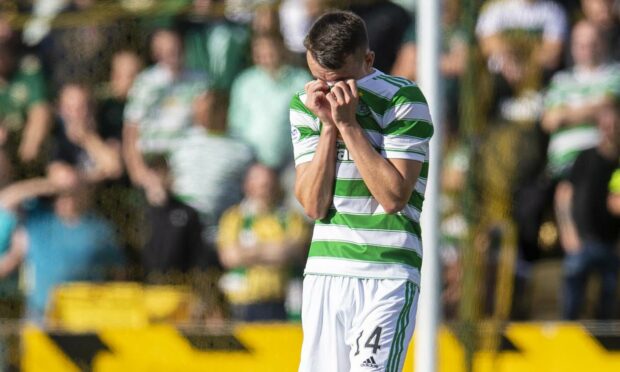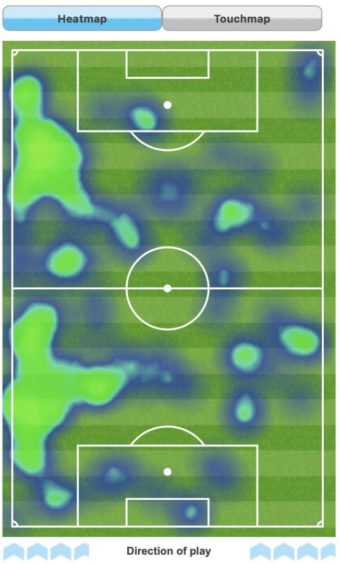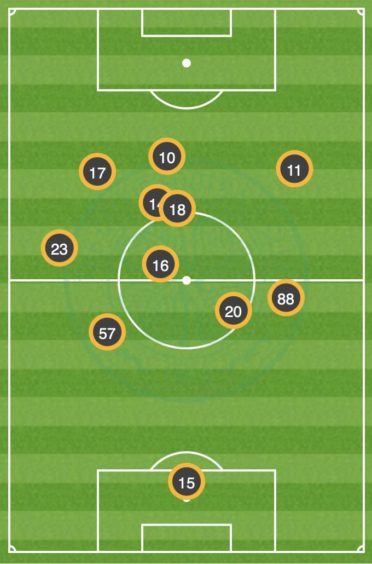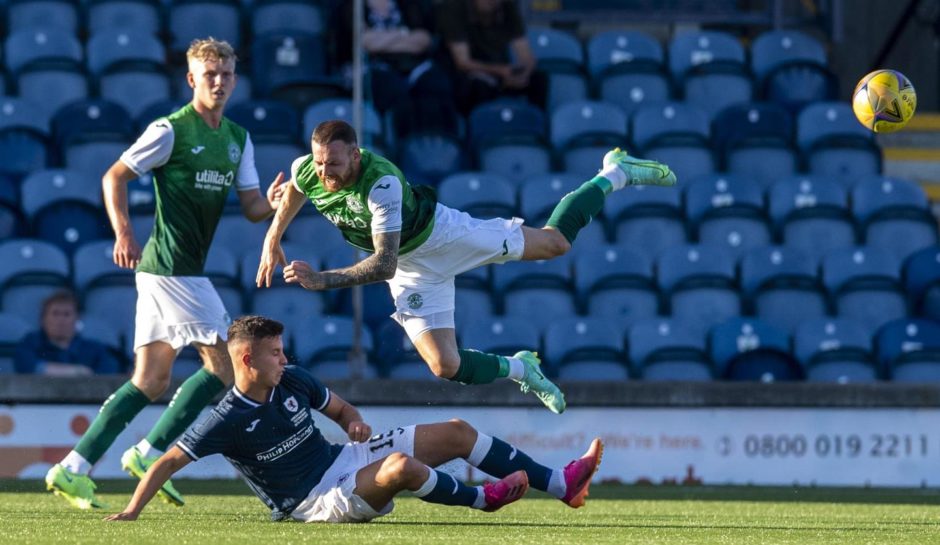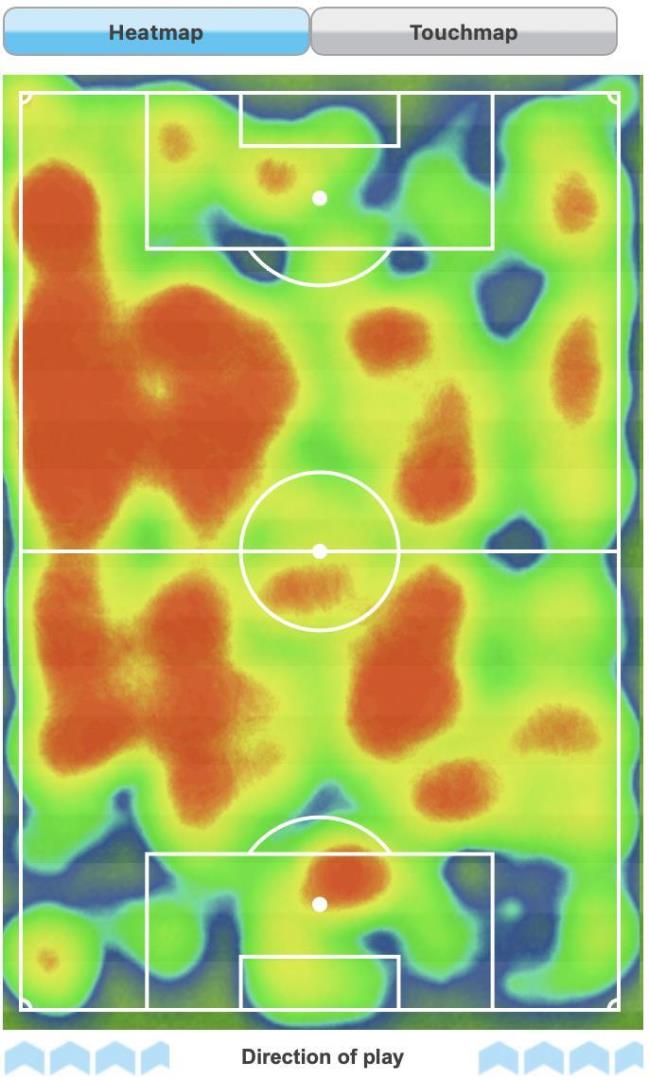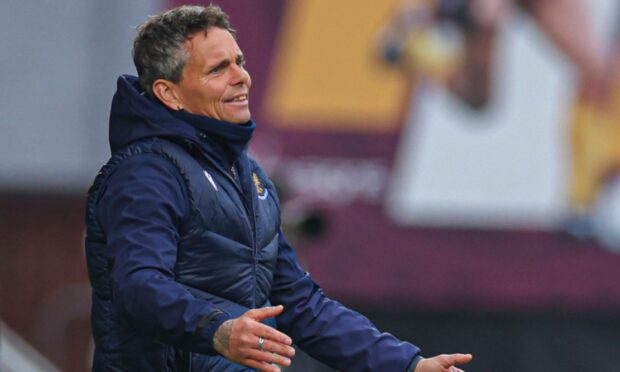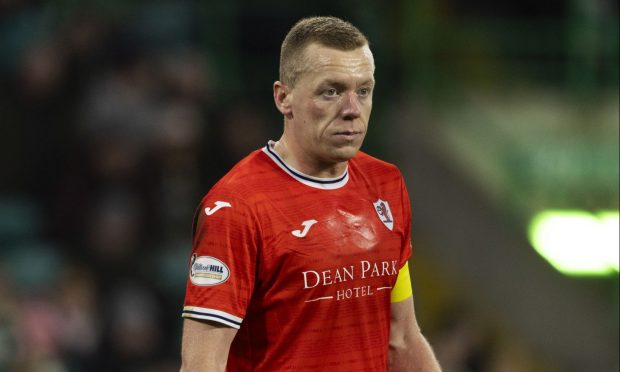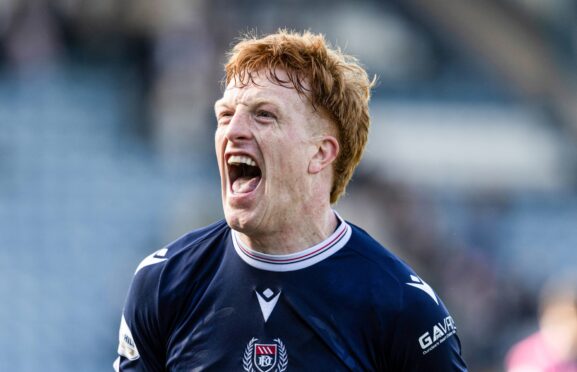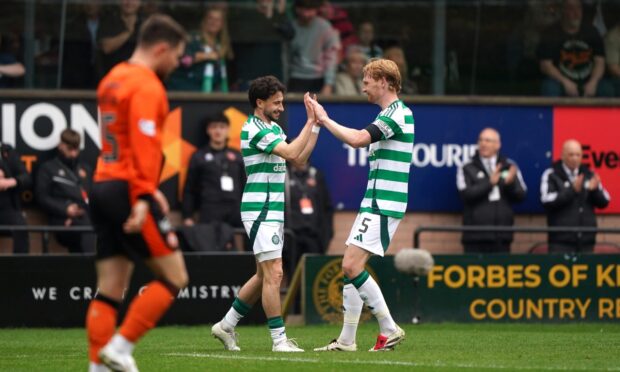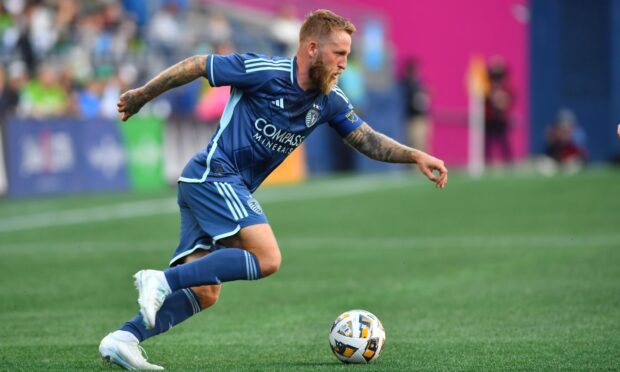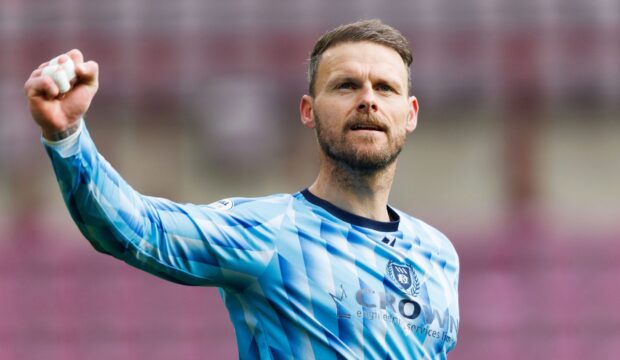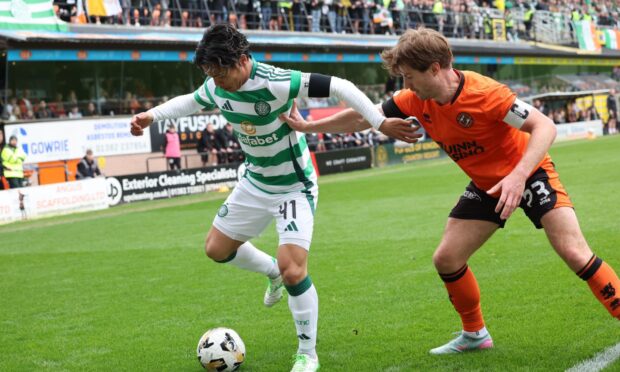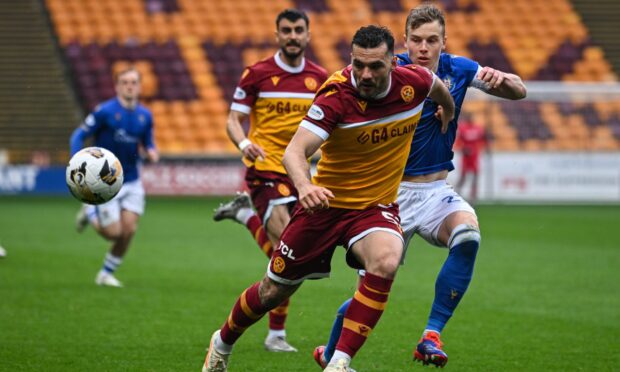Celtic’s 1-0 defeat against Livingston represented a third Premiership defeat from six outings — their worst start to a league campaign since 1998/99.
The Hoops sit in sixth spot.
Cause for cautious optimism ahead of Raith Rovers’ visit to Glasgow’s east end for Thursday’s Premier Sports Cup quarter-final?
Or are wounded Bhoys to be feared?
The task facing Rovers, seeking to win at Celtic Park for the first time since 1962, remains onerous. A victory would be a miraculous achievement.
Nevertheless, Celtic’s failings this term have showcased some weaknesses that Raith can seek to exploit.
To the left
The Lions concentrated 48 per cent of their attacks down the left flank, with the combined heat-map of Jackson Longridge, James Penrice and Andrew Shinnie (below) illustrating how they created an overload on that side.
The average position of Celtic’s players (below) illustrates why that was a sensible strategy from Livi boss David Martindale, with a vast distance between Liel Abada and Josip Juranovic as the midfield three skewed towards the other wing.
The goal came from that side when Livi recovered possession and sprung Longridge, who produced a super cross for Shinnie to kill the ball and fire superbly beyond Joe Hart.
Coffee brewed? Toast buttered? Feet up? Perfect – here's that @andy_shinnie winning goal to get your Monday morning up and running…💛 pic.twitter.com/FUm2XDPihD
— Livingston FC (@LiviFCOfficial) September 20, 2021
Raith’s star performer this season has been Dario Zanatta, scoring five goals in 11 games and proving an utter menace cutting inside from the left wing as the willing Liam Dick overlaps.
As such, the duo will have watched the manner of the Celtic’s defeat in West Lothian with real interest.
Smothering midfield
Livingston succeeded in suffocating Celtic’s midfield, aided by a fairly impotent showing by Tom Rogic and James McCarthy.
Neither player created a single opportunity during the 90 minutes, nor did they regularly succeed in breaking the lines to release the Hoops attackers.
No player touched the ball fewer times that Celtic forward Albian Ajeti.
A tireless Livi three of Jason Holt, Jack McMillan and Adam Lewis (as well as the superb Odin Bailey when he entered the fray) should be commended for their efforts.
Rovers can take heart from that, given they are more than capable of replicating that midfield resistance through any combination of Dylan Tait, Ross Matthews, Brad Spencer and Blaise Riley-Snow.
David Turnbull did create five chances but, without the departed Ryan Christie and injured Callum McGregor, the lack of inspiration in the middle of the park was startling.
Deja vu
The congestion in midfield forced Celtic to shift the ball wide and launch crosses into the box; an ideal outcome for a Livi side with the physicality of Ayo Obileye and Jack Fitzwater in defence.
Celtic put in 33 crosses from open play. That is more than ANY other side in a Scottish Premiership fixture this season.
And, if they can do the same, Raith boss John McGlynn will back Kyle Benedictus and Christophe Berra to deal with dangerous deliveries similarly competently.
Now, for the bad news
Celtic have not won an away game since February 14. It is easy to find failings in their endeavours on the road.
But Thursday’s match does not take place at Stark’s Park.
Celtic have been a different animal at Parkhead.
They have won all but one fixture at home (a 1-1 draw against Midtjylland) and have scored 24 goals in seven matches; an average 3.4 per game, maths fans.
They have defeated St Mirren and Dundee 6-0 already.
It may not be Mission Impossible for the Rovers, but it remains Mission Improbable.
But Celtic’s recent struggles can at least allow the Raith faithful to dream.
